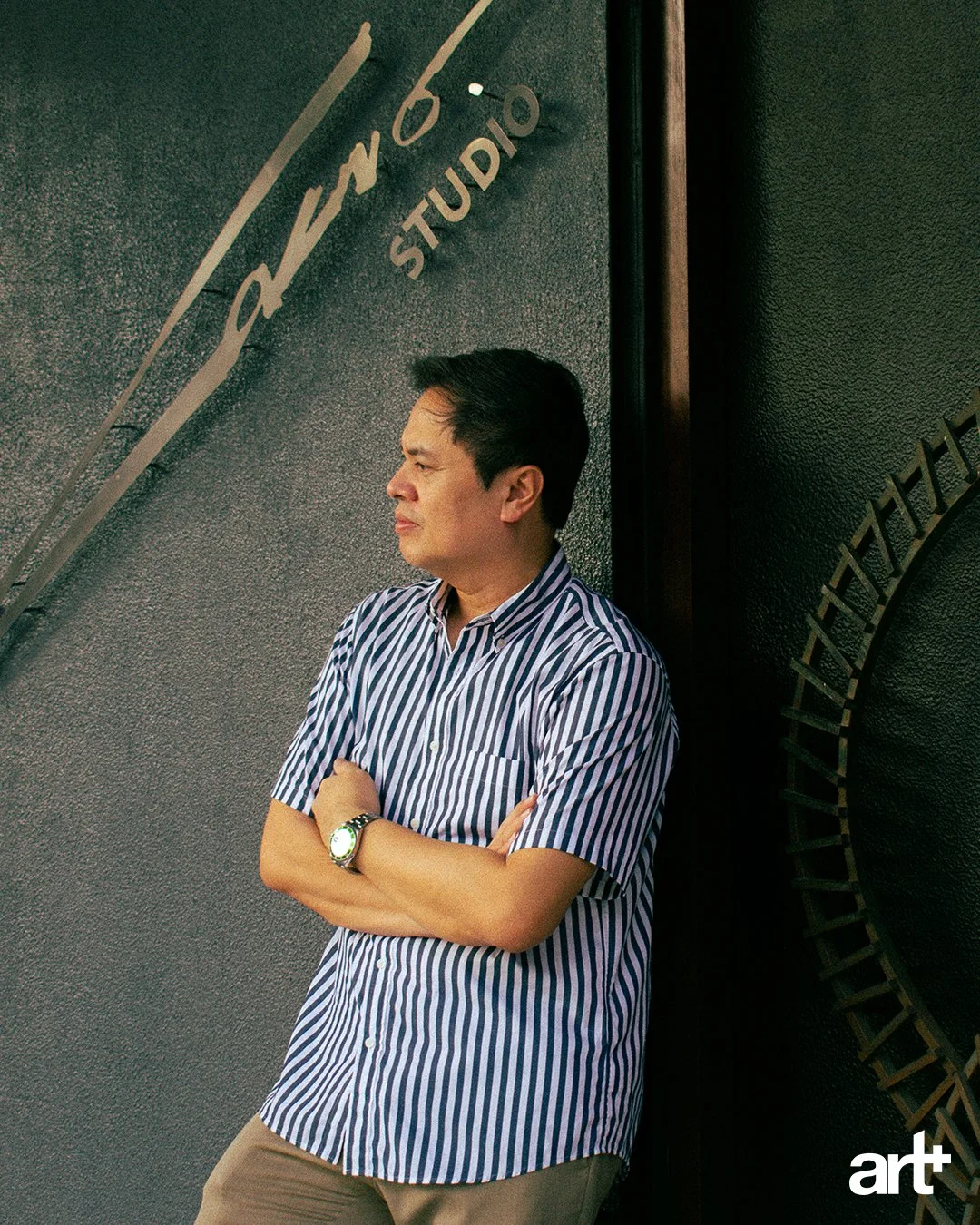Breathing Livelihood Into Art with Michael Cacnio
Michael Cacnio pays tribute to the unsung “Everyday Heroes” of Filipino society through his MoCAF special exhibition of the same name.
Words Mika Geronimo
Photography Kim Albalate
June 27, 2024
Filipino sculptor Michael Cacnio rose to prominence in the local and international art scene thanks to his signature brass sculptures that depict the working Filipino. But before he found his niche as an artist, Cacnio's journey marked its beginnings in what he described as the vibrant city of Malabon.
It's the quintessential trajectory of chancing upon inspiration from one’s upbringing, to eventually having the work be heavily informed by it. For Cacnio, it was his grandfather who was a fisherman, that sparked this interest in the grit of the Filipino working man.
The next thing he knew, he was inspired by other noble, unsung professions. From the sorbeteros, the taho vendors, to the kakanin sellers, all of whom endure honest labor and early hours to provide both to the community and their own families. This, then, became his prerogative – to have his works "preserve the way of life in Malabon," and by extension, capture the nuances of his own life.
“From that place, [it was] very colorful but at the same time, very inspiring yung environment sa place where I grew up," he recalled, sharing that his art is his contribution to spotlight Filipino ingenuity while honoring their way of life.
Beyond the intricate details in both form and purpose, it goes without questioning that Cacnio is an artist who values social commentary. Likening it to the art of writing, he believes that visual artists are indebted to their feelings, which they have every right to or are encouraged to unleash into the world: "Syempre what you feel, what you think, you have to express. Art is something [you use] to comment on your surroundings and your environment."
Beyond entertaining audiences and provoking all kinds of emotions, art is a crucial and albeit powerful tool for artists like him to also encourage certain ideas from its viewers.
Having been in the industry for more than three decades now, Cacnio has seen both the benefits and disadvantages his contemporaries have encountered since. For instance, he admits that today's artists tend to become dependent on machines and digital tools.
With that, he reminds younger creatives that there is indeed merit in going back to basics “in order to learn how to draw, using their own hands, to sculpt using their own hands – to feel the art, to feel like a creator.”
Beyond the physical satisfaction of art making, there are also more cognitive benefits. Cacnio says that works derive energy from their artists' unabashed feelings and skills.
However, Cacnio does not necessarily discount technology's impact on the latest generation of visionaries, as he applauds them for being "aggressive and enthusiastic" in their creativity.
"Maybe because they are now living in the Internet. They can see things not only here in the Philippines but also in other countries,” he said, noting how learning about other international artists' styles has become all the more accessible today. This, he admits, poses a challenge for him as an older artist, to constantly reinvent himself and "maintain his originality."



For this year's Modern and Contemporary Arts Festival, art enthusiasts can expect to be transported to Cacnio's earlier stages as an artist. The sculptor shared that he will feature his line of works with vendors as his main subjects, while also integrating newer elements like kamagong wood and grass details in his special exhibition “Everyday Heroes.”
Catch Michael Cacnio’s special exhibition at this year’s Modern and Contemporary Art Festival, happening from July 5 to 7 at the Marquis Events Place.



